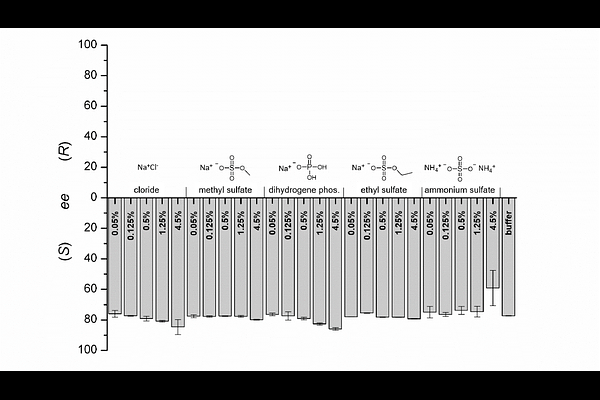Influence of ionic liquids on enzymatic asymmetric carboligations

Influence of ionic liquids on enzymatic asymmetric carboligations
Gerhards, T.; El Harrar, T.; Klein, A. S.; von Lieres, E.; Paul, C. E.; Lavandera, I.; Gotor-Fernandez, V.; Pietruszka, J.; Pohl, M.; Gohlke, H.; Rother, D.
AbstractThe asymmetric mixed carboligation of aldehydes catalyzed by thiamine diphosphate (ThDP)-dependent enzymes provides a sensitive system for monitoring changes in activity, chemo-, and enantioselectivity. While previous studies have shown that organic cosolvents influence these parameters, we now demonstrate that similar effects occur upon addition of water-miscible ionic liquids (ILs). In this study, six ThDP-dependent enzymes were analyzed in the presence of 14 ILs under comparable conditions to assess their influence on enzymatic carboligation reactions yielding 2-hydroxy ketones. ILs exerted a moderate to strong influence on activity and, more notably, altered enantioselectivity. (R)-selective reactions were generally stable upon IL addition, while (S)-selective reactions frequently showed reduced selectivity or even inversion to the (R)-enantiomer. The most significant change was observed for the ApPDC_E469G variant of pyruvate decarboxylase from Acetobacter pasteurianus, where the enantiomeric excess shifted from 86% (S) to 60% (R) in the presence of 9% (w/v) Ammoeng 102. Control experiments indicated that this shift was primarily due to the Ammoeng cation rather than the anion. To explore the molecular basis of this phenomenon, all-atom molecular dynamics (MD) simulations were performed on wild-type ApPDC and the E469G variant in Ammoeng 101 and Ammoeng 102. The simulations revealed that hydrophobic and hydrophilic regions of the Ammoeng cations interact with the (S)-selective binding pocket, thereby favoring formation of the (R)-product. These results highlight the potential of solvent engineering for modulating enzyme selectivity and demonstrate that MD simulations can capture functionally relevant enzyme-solvent interactions at the atomic level.